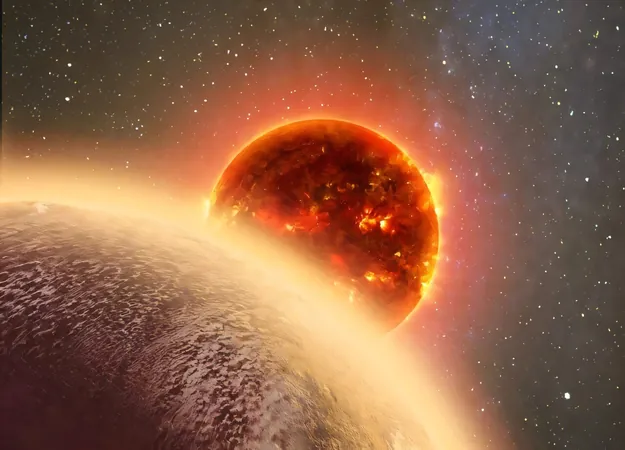
Shocking Discovery: GJ 1132 b Lacks an Atmosphere, New JWST Insights Reveal!
2025-08-27
Author: Sophie
Mysteries of GJ 1132 b Unveiled
In the thrilling world of astronomy, data can often lead to conflicting conclusions, especially when studying distant exoplanets. A recent breakthrough concerning planet GJ 1132 b has stirred up excitement—and confusion—among scientists, but new findings are set to clarify the situation once and for all.
The New Revelation from the James Webb Space Telescope
Thanks to enhanced observational efforts using the cutting-edge James Webb Space Telescope (JWST), astronomers now confidently assert that GJ 1132 b likely does not have an atmosphere. This critical finding not only reshapes our understanding of this intriguing planet but also has broader implications for the entire field of exoplanet research, as outlined in a recent paper published on the arXiv preprint server.
What Makes GJ 1132 b So Special?
Nestled about 41 light-years away, GJ 1132 b is tantalizingly close to its M-dwarf star, orbiting just 0.0153 AU away in a remarkably quick 1.6-day cycle. Its rocky composition and size—similar to Earth—create a fascinating juxtaposition; a planet that appears Earth-like yet operates under entirely different environmental conditions. But given its proximity to a highly active star, the question arises: could it even maintain an atmosphere?
Debunking Atmosphere Myths
Earlier data from JWST presented conflicting theories about GJ 1132 b. Some observations hinted at a watery atmosphere, while others suggested a complete absence of one. The newest study, which examined two additional transits of the planet, strongly leans toward the conclusion that GJ 1132 b’s atmosphere is nonexistent—an assertion bolstered by three consistent data sets.
The Phenomenon of Stellar 'Cool Spots'
Curiously, the researchers discovered that unusual "cool spots" on the host star’s surface during the initial observations may have distorted the data, creating the false impression of an atmosphere. This revelation sheds light on the complexities of analyzing exoplanet atmospheres, particularly around highly variable stars.
Innovative Methods and Recommendations for Future Research
The researchers employed two distinct viewing modes of JWST's NIRSpec instrument—G395H (high resolution) and G395M (medium resolution)—to gather data. While concerns arose about gaps in the G395H data, the study revealed no significant issues, showcasing the robustness of their findings. Moving forward, the authors advocate for a "leave-one-out" analysis approach when dealing with exoplanet data, especially in cases involving variable stars.
What's Next for Exoplanet Exploration?
The intriguing case of GJ 1132 b not only advances our understanding of this rocky planet but also emphasizes the importance of detailed observational strategies in exoplanet research. As scientists continue to explore the cosmos, discoveries like these hold the potential to unlock new insights about planetary atmospheres and the habitability of worlds beyond our solar system.









 Brasil (PT)
Brasil (PT)
 Canada (EN)
Canada (EN)
 Chile (ES)
Chile (ES)
 Česko (CS)
Česko (CS)
 대한민국 (KO)
대한민국 (KO)
 España (ES)
España (ES)
 France (FR)
France (FR)
 Hong Kong (EN)
Hong Kong (EN)
 Italia (IT)
Italia (IT)
 日本 (JA)
日本 (JA)
 Magyarország (HU)
Magyarország (HU)
 Norge (NO)
Norge (NO)
 Polska (PL)
Polska (PL)
 Schweiz (DE)
Schweiz (DE)
 Singapore (EN)
Singapore (EN)
 Sverige (SV)
Sverige (SV)
 Suomi (FI)
Suomi (FI)
 Türkiye (TR)
Türkiye (TR)
 الإمارات العربية المتحدة (AR)
الإمارات العربية المتحدة (AR)